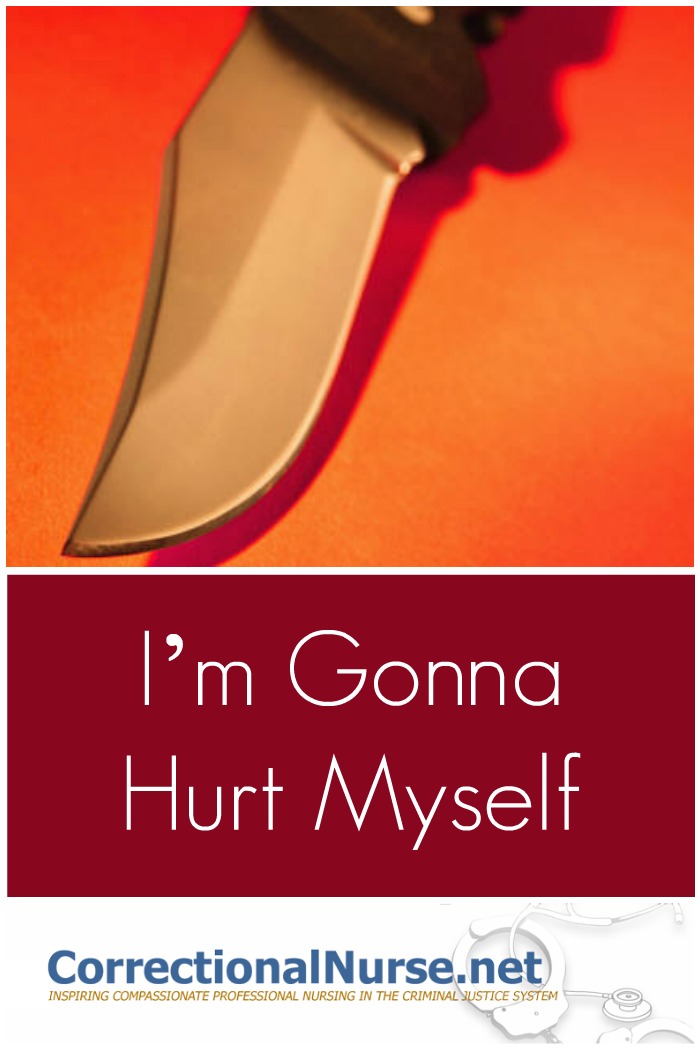An inmate arrives at medical with head lacerations from repetitive head banging against a cell wall. Another is found opening an abdominal wound stitched up after the trauma of a car-chase crash. Still another is admitted to the infirmary having sliced arms and chest with a razor in the shower. Self-injury behavior (SIB) is a misunderstood phenomenon that is quite prevalent in the inmate population. A recent report on SIB in prisons estimates 2-4% of the general prison population engage in the activity. The most common forms of self-injury in the correctional setting are cutting, inserting or swallowing objects, head banging, and opening old wounds. As a nurse in corrections, you will definitely be confronted with patients who have self-inflicted bleeding, bruising and burning damage.
Of course, nursing care for self-injury behavior (SIB) physical wounds is quite straightforward and based on the actual injury. However, understanding the potential causes of the behavior will help you to constructively deal with your patient as you mend their self-inflicted wounds.

Self-Injury Behavior
Why are they doing this?
Experts have a variety of theories on the origins and treatment of this behavior. Although staff may initially see SIB as a desire for attention or a response to boredom, some mental health experts are finding the behavior to be motivated by a ‘coping deficit’ when dealing with feelings of depression or powerlessness. Many who self-injure have a history of childhood physical or sexual abuse. As you may already know, children experiencing repeated abuse often cope by dissociation from the physical and psychological pain. This same dissociation from pain is seen in some who self-injure.
They must be suicidal
Other explanations for the phenomena include the use of SIB to ‘manage the strong emotions that lead one to consider dying’ (Mazelis). It is questionable whether self-injury is a suicide attempt or an attempt to quell suicidal thoughts. Janis Witlock, PhD, Cornell suggests that self-injury acts as a ‘drug’ to release endorphins that calms the individual, thereby relieving stress for a time.
What can be done?
No matter the cause of the behavior, a concerted, multi-disciplinary response to SIB in the correctional setting is highly advocated. Suggested interventions include intensive therapy, group sessions and careful treatment planning. SIB must be treated as more than a disciplinary issue to be controlled. A collaboration of custody and treatment efforts is warranted.
Much is still to be learned about assessing, intervening and preventing SIB. A recent call was made for national standards to address the condition in the corrections community. In the meantime, understanding the potential causes of the behavior will help you to be a part of the team approach to treating this complex condition.
If you like this post, you might like:
HIV and Inmates
Kim S says
It seems as though quite a lot of the same ideology can be applied to juveniles out side of confinement as well.
Gayle Burrow says
An important topic that needs both more discussion and research. As each person’s situation is different but the self harm is the same–a release from distress they either cannot verbalize or understand. Thanks for the article and discussion.